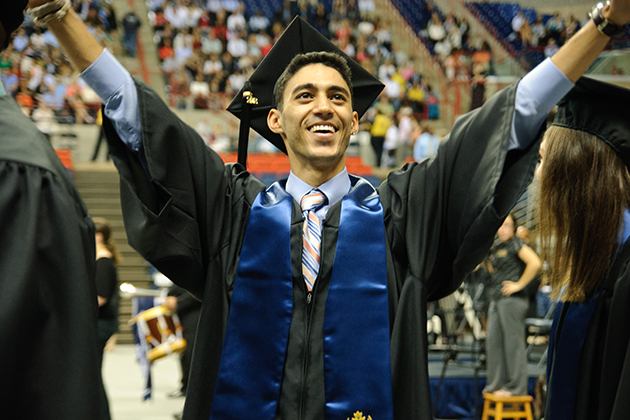
Jeremy Teitelbaum, dean of the College of Liberal Arts and Sciences, is a guest contributor to UConn Today. Read his previous posts.
Every once in a while I come across statistics that shake up my view of the world, and recently I had one of those moments.
The National Center for Education Statistics released the report “STEM Attrition: College Students’ Paths Into and Out of STEM Fields,” and reading it, I was surprised to find that some of my assumptions about the differences between students entering college to study Science, Technology, Engineering, and Mathematics, and other students, just aren’t true. This revelation reminded me once again that we need to structure universities to give students access to a liberal education that allows them to find not only success, but also happiness.
The report shows that, nationally, nearly half of all students who enter college planning to major in STEM fields – meaning physical and mathematical sciences, life sciences, engineering, or computer and information sciences – eventually end up elsewhere. About 20 percent fail to complete any post-secondary degree within six years, and the other 30 percent change majors to something else: social sciences, humanities, education, business, or health professions, for example. At UConn, a study of students entering in 2005 showed a slightly higher percentage (60 percent) stick with STEM, while 20 percent changed to other fields, and 20 percent didn’t finish in six years.
These results didn’t surprise me. What did surprise me was that the same national percentages hold for non-STEM majors. Indeed, 56 percent of students who enter college in Humanities majors don’t finish a degree in Humanities. About 20 percent don’t graduate, and the rest change to a different area. Among students who begin their education in Social and Behavioral Sciences, Education, Business, or the Health Professions, the results look very similar (see page 2 of the NCES report).
In other words, there’s nothing special about “STEM attrition.” Taken all together, this report drives home a very simple fact: many students come to college and end up changing their minds about what they want to major in. They end up switching between broad groupings of subjects, like from Humanities to Social Sciences, or from STEM to Business, or even from Social Sciences into STEM.
Why, then, do we refer to “attrition” at all? The word means “the act or process of weakening and gradually defeating an enemy through constant attacks and continued pressure over a long period of time.” Are we to assume that the “enemy” are the students, the “constant attacks and continued pressure” are the courses in science and engineering to which we subject them, and the “defeat” is when the students throw up their hands and change to another major? I sincerely hope not!
In the end, this statistical report was a sharp reminder of a basic principle: An important goal for a college education is to give students the tools and opportunities to find their intellectual home. As the report shows, all students – STEM and non-STEM – will explore their options. And while we should do everything we can to help students who love science or mathematics succeed in those fields, there’s no reason to see a student who changes from a science major to something else (or vice versa) as a failure. What matters is that the student finds happiness in their choice.



